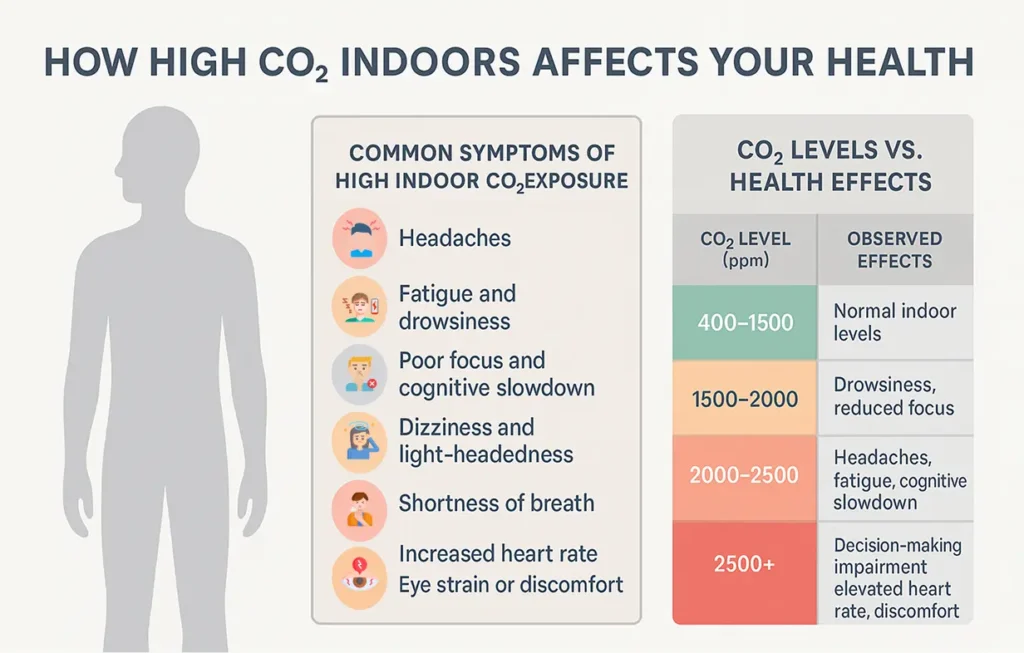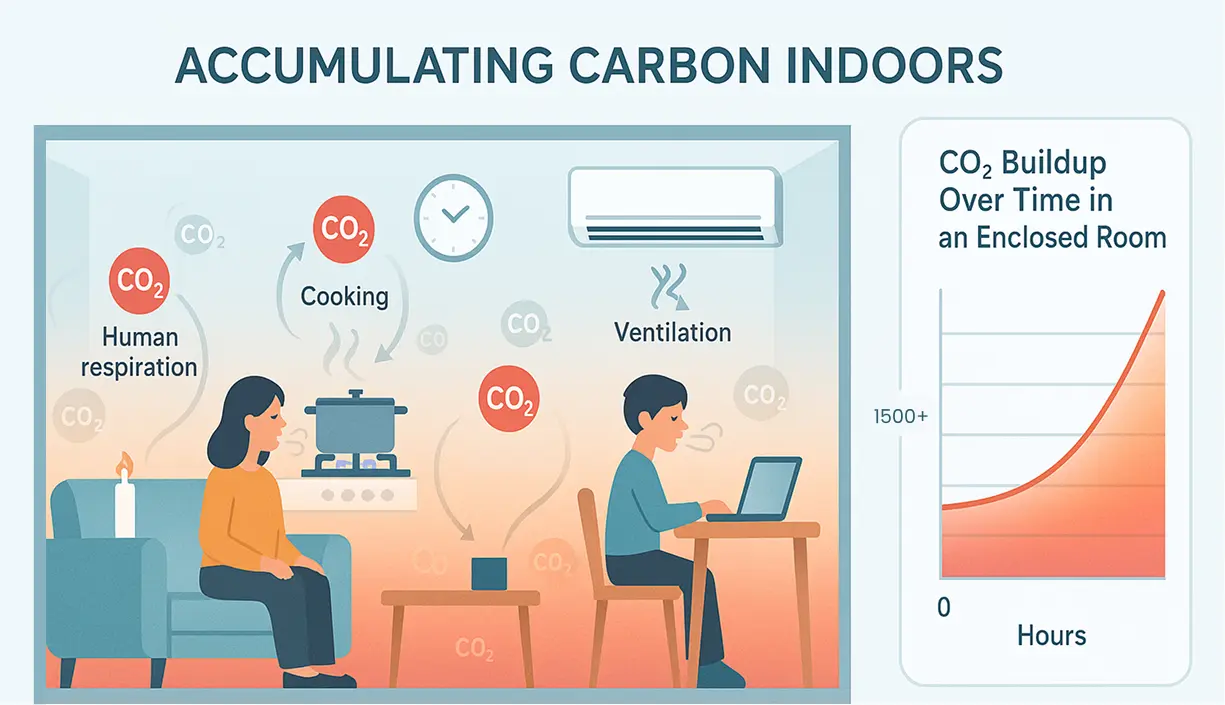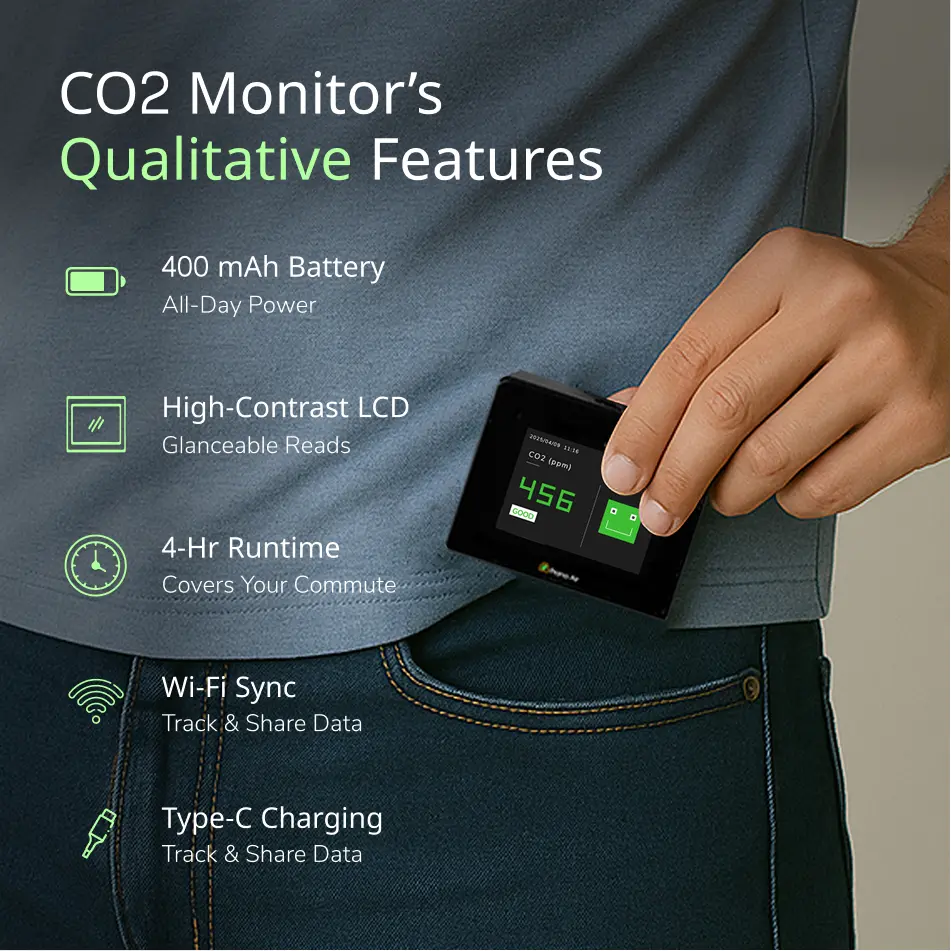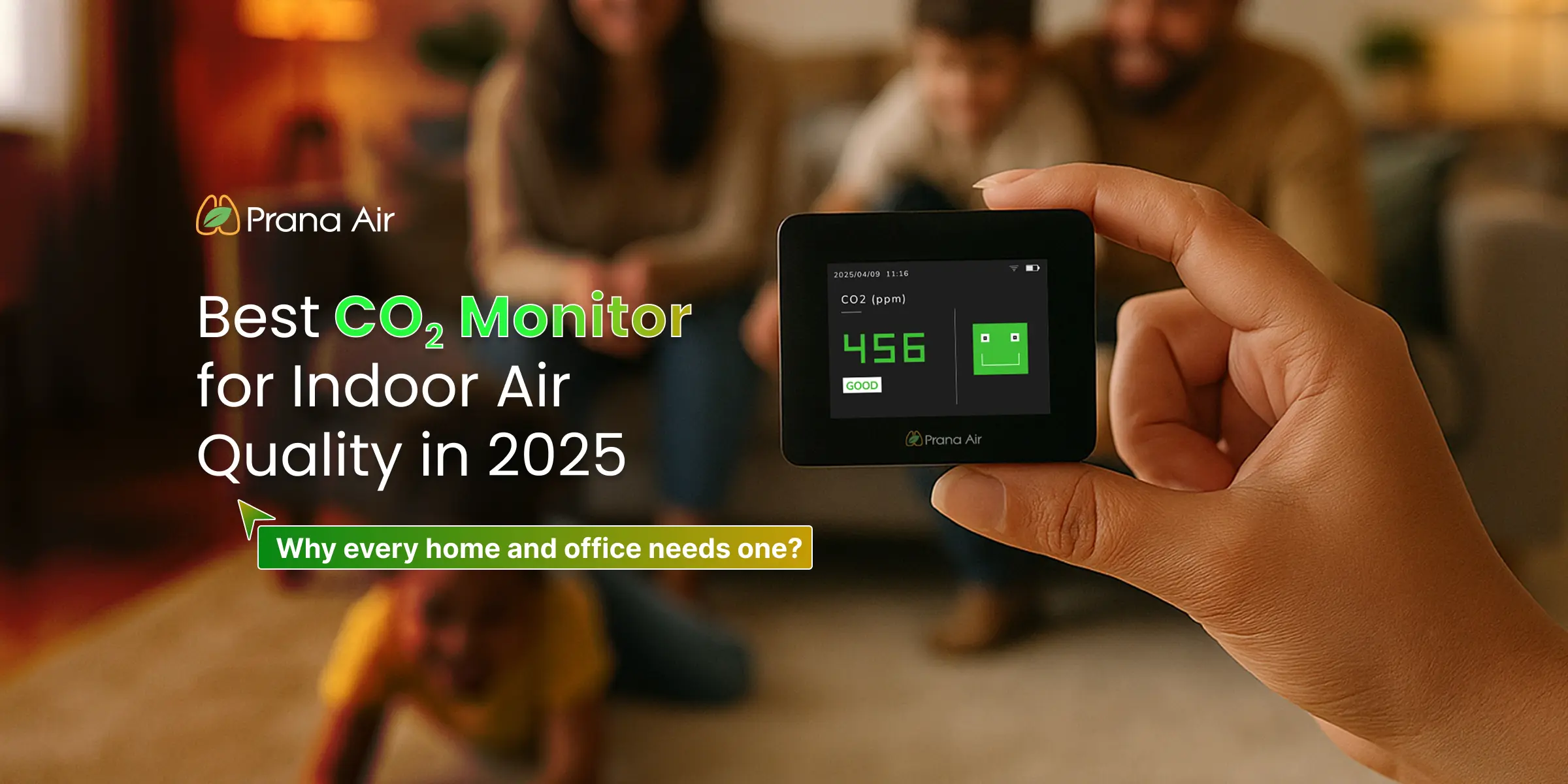We often associate clean air with the outdoors — a walk in the park, a breath of fresh morning breeze. But what about the air inside your home, office, school, or gym? The truth is, indoor air can be more polluted than outdoor air, and one of the most underestimated pollutants is carbon dioxide (CO₂). Thus, to know the CO2 levels, the Best CO2 Monitor for Indoor Air Quality is required.
As we spend over 90% of our lives indoors, we need to start treating indoor air quality (IAQ) with the same urgency as we do food safety or clean water. Yet, CO₂ — a colourless, odourless gas — quietly accumulates in poorly ventilated spaces, causing health issues, lowering cognitive performance, and decreasing comfort levels without us even realizing it.
In this blog, we’ll explore the science behind indoor CO₂, its proven impact on human health and productivity, and why the Prana Air Pocket CO₂ Monitor is one of the most essential tools you can own in 2025 to ensure your indoor air stays safe, fresh, and breathable.
What is CO₂ and Why Is It a Problem Indoors?
CO₂ is naturally present in the atmosphere at about 400 parts per million (ppm). It’s also a byproduct of human respiration — every time we exhale, we release CO₂ into the air. While this isn’t an issue in well-ventilated spaces, enclosed indoor environments with limited airflow can see CO₂ levels climb rapidly, especially when multiple people occupy the same room.
According to the ASHRAE guidelines, indoor CO₂ levels should ideally remain below 1,000 ppm. However, levels of 1,500 to 2,500 ppm are not uncommon in bedrooms, classrooms, or offices with insufficient ventilation. In small or sealed rooms, the levels can even exceed 3,000 ppm, leading to significant discomfort and measurable health effects. The monitoring is only possible with the Best CO2 Monitor for Indoor Air Quality.
Health and Cognitive Effects of Elevated CO₂ Levels
Unlike toxic gases, CO₂ at typical indoor concentrations won’t kill you — but it will impair your quality of life. The effects are cumulative and often mistaken for unrelated issues such as dehydration, stress, or burnout.

Numerous peer-reviewed studies have shown the following correlations between indoor CO₂ levels and human performance:
| CO₂ Level (ppm) | Observed Effects |
| 400–1500 | Normal indoor levels |
| 1500–2000 | Drowsiness, reduced focus |
| 2000–2500 | Headaches, fatigue, cognitive slowdown |
| 2500+ | Decision-making impairment, elevated heart rate, discomfort |
A 2016 study by Harvard T.H. Chan School of Public Health found that people working in spaces with CO₂ levels over 1,400 ppm showed a 21% reduction in cognitive performance, especially in tasks requiring decision-making and strategy.
The takeaway? Even if your space feels fine, CO₂ could be silently reducing your brainpower and energy — every single day.
Sick Building Syndrome and CO₂: How Poor Air Quality Affects Your Health Without You Realizing
While SBS can result from multiple factors (like VOCs, mold, poor lighting, or inadequate ventilation), CO₂ is a key indicator of overall ventilation quality. Here’s how:
- CO₂ doesn’t cause SBS directly, but high indoor CO₂ levels (1,000+ ppm) strongly indicate poor ventilation, which allows other pollutants (like VOCs, dust, bacteria, and allergens) to accumulate.
- Multiple studies show a correlation between elevated CO₂ and increased incidence of SBS symptoms due to oxygen deprivation and buildup of airborne irritants.
- Buildings that lack CO₂ monitoring often overlook ventilation issues, creating conditions where SBS thrives.
Why CO₂ Levels Are Rising Inside Homes and Offices in 2025?

Several trends have made indoor air worse than ever before:
- Energy-efficient buildings are sealed tight to conserve heating and cooling, which also traps stale air.
- Remote work and online learning have increased the number of hours spent indoors.
- Smaller living spaces with less ventilation per person amplify CO₂ buildup overnight.
- More people per household or office means more CO₂ released into shared indoor spaces.
Add to that the rising awareness of airborne illness transmission and the need for good air circulation, and it becomes clear: the Best CO2 Monitor for Indoor Air Quality for monitoring is no longer optional — it’s essential.
How to Monitor Indoor Air Quality Effectively with the Best CO₂ Monitor?
The only way to truly understand and improve your indoor air quality is through data. A CO₂ monitor gives you a real-time, accurate snapshot of how breathable your air is — and when you need to ventilate, purify, or adjust your space.
A good CO₂ monitor doesn’t just flash a number — it empowers you to make better decisions for your health, productivity, and peace of mind.
Why the Prana Air Pocket CO₂ Monitor is the Best CO2 Monitor for Indoor Air Quality?
Designed by experts in environmental technology, the Prana Air Pocket CO₂ Monitor is built for the modern user who needs real answers in real time — at home, at work, or on the go.

Core Features That Make It Stand Out:
- NDIR Sensor Technology
Utilizes a Non-Dispersive Infrared sensor for accurate CO₂ measurement, ranging from 400 to 5000 ppm — suitable for home, office, schools, and professional monitoring. - Compact and Portable
Small enough to carry in your bag or pocket, this device is ideal for mobile professionals, travelers, or parents who want to monitor classrooms. - Real-Time Display
The bright, digital screen shows live readings of CO₂, temperature, and humidity, so you can instantly assess indoor conditions. - Rechargeable and Durable
Comes with a long-lasting battery and USB charging — perfect for all-day monitoring without constant recharging.
Real-Life Applications: Where the Pocket CO₂ Monitor Matters
- Bedrooms: CO₂ can rise significantly during sleep due to exhalation in a closed room. Monitoring levels helps ensure quality sleep and proper ventilation.
- Home Offices: Long work hours in poorly ventilated rooms can reduce concentration and increase fatigue. Knowing your CO₂ levels helps you schedule air breaks.
- Schools and Classrooms: High CO₂ impairs learning. Teachers and administrators can use the monitor to adjust classroom ventilation and timing.
- Gyms and Studios: With people exercising in enclosed spaces, air can get stale fast. A monitor ensures safe breathing conditions.
- Shared Offices and Conference Rooms: Monitor air quality in real-time to ensure collaborative spaces stay fresh and productive.I
The Bottom Line: Don’t Just Ventilate — Monitor First
You wouldn’t drink water from a random tap without checking if it’s clean. So why breathe indoor air without knowing its quality?
The Prana Air Pocket CO₂ Monitor bridges the gap between guesswork and precision. It helps you identify air quality issues before they affect your health, and ensures every room you occupy supports your comfort, productivity, and well-being.
In 2025 and beyond, the best investment you can make for your home or workspace isn’t a new gadget — it’s the air you breathe. Make it count.


